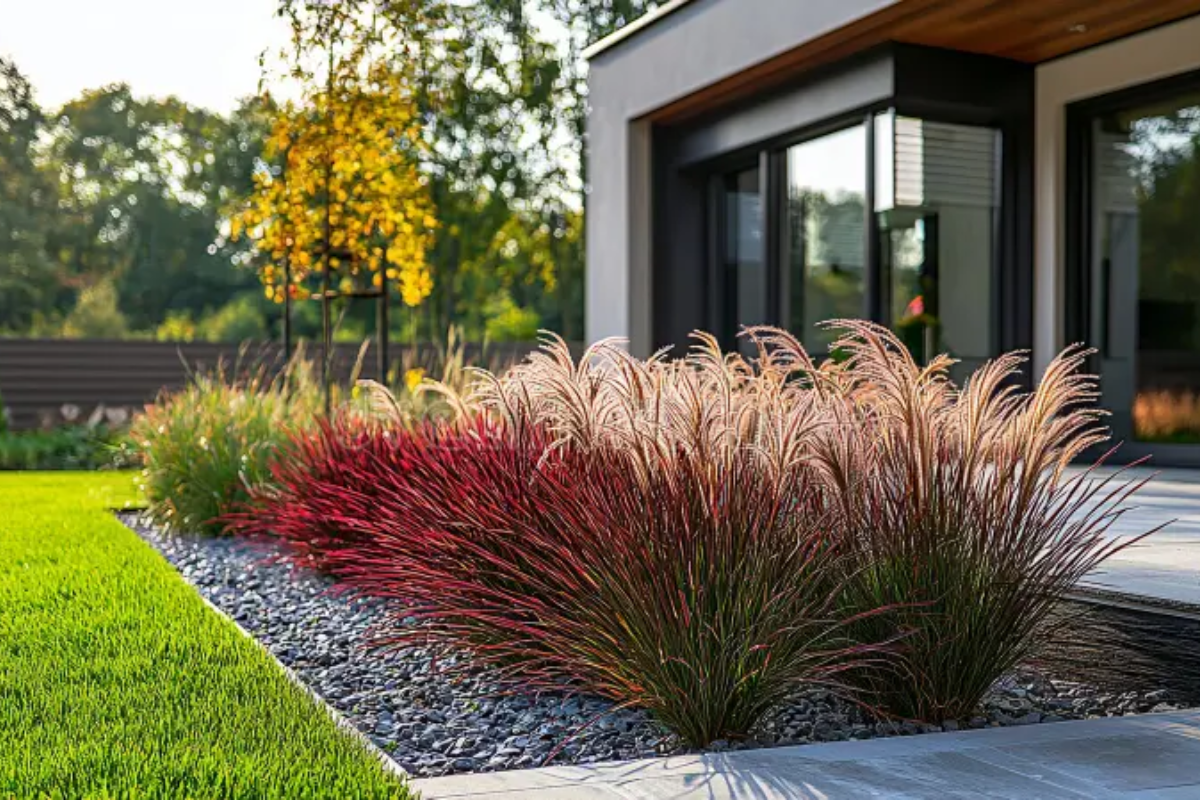
To transform an outdoor area into an attractive garden, its existence must serve a purpose. These include ornamental grasses, one of the most chic, low-maintenance, and differentiated ways of raising the garden beds. These plants create movement and texture with interest for every macro plot, something very few combined traditional planting schemes can offer. In this post, we will see many varieties of ornamental grasses, how to choose and care for them, and some cool ways that embodiment can guide their ornamental grass landscaping.
Ornamental grasses give their grace to the looks and demand the ability to survive and care for. Whether planted in large drifts or used alone at the border, they offer
Dynamic movement—they swish in the breeze, enlivening otherwise still spaces in the garden.
Structural textures—from fine fescues to bold Miscanthus, grasses come in various forms and heights.
Year-round interest—a large percentage of them continue to hold beautiful seed heads in winter.
Low maintenance—most have a bit of drought, poor soil, and just pruning every once in a while in their backyard.
If anything, these characteristics make them indispensable to the dynamic scenario of an ornamental grass landscape.
When selecting the right decorative grass sorts, consideration may be given to their mature length, developing conditions, and seasonal enchantment. Here are some popular types:
Feather Reed Grass (CALAMAGROSTIS ACUTIFLORA): Vertical columnar dependence with beautiful feathers; comes accessible for orlation or mass planting.
Blue Fescue (FESTUCA GLAUCA): Compact and clustering with silver-blue foliage; top-notch for swings or crates.
Maiden Grass (Miscanthus sinensis): High and deplumed feathers in the past due to the summer that carry beauty to the panorama.
River Oats (Chasmanthium latifolium): Unusual seed heads dangle and seize the mild beautifully.
Switchgrass (Panicum virgatum): Fine-textured clumps that give vertical height without overpowering a space.
Thoughtfully grouping these grass sorts can create a landscape wherein subtle shifts are made in the course of the seasons.
A properly crafted plan sheds all of the effect on ornamental grasses landscaping. Follow those concepts so far.
Watch for scale and top: Combine low and mid to tall grasses for laying a visible motorbike.
Use repetition: A few clumps of one grass create a greater cohesive perception.
Consider a mix-and-match of textures: Fine and feathery grasses as a comparison with broader-leaved perennials.
Add seasonal highlights: Include grasses that bloom through one-of-a-kind seasons of your garden to keep the garden evolving.
Frame key elements: Tall vertical grasses help screen utility areas or give a focal point structure to whatever is important.
When grasses tussle with perennials, shrubs, and hardscape, your garden becomes a living canvas.
These minimum maintenance tasks keep us happy because we start planting in sunny, well-drained sites. Heavy soils should have compost to rectify them.
Watering: Most critical in established order, then cut to an herbal rainfall-installed regime.
Fertilizing: A proper application of a gentle spring slow-launch fertilizer will assist in holding energetic increase, mainly on sandy soils.
Pruning: Trim tops of grasses to about 10 cm peak above the ground in early spring, earlier than new growth starts.
Division: Every 3 to 5 years, divide large clumps to provide space and recharge energy.
This is a care regimen that goes in the long run towards the successful establishment of ornamental grasses.
These are the different grasses that flourish at different times to have a living garden throughout the year:
In the early spring and early summer, Festuca Azul and Calamagrostis are the first to start growth and bring fresh colors.
Late summer and autumn: Maiden grass and switchgrass erupt in outstanding flowers and bold seed heads.
Interest in winter: Feather Reed and River Oats exhibit dried plumes for architectural and aesthetic interest well into early spring.
Thoughtful planning informed by the seasons makes for a great look in your ornamental grass landscaping no matter what the date on the calendar is.
Companion plants for grasses should beautify them even more:
Echinacea: Their daisy-like blooms mingle beautifully with flowing grass stems.
Russian Sage: Silvery foliage and fine textures of grasses are well complemented by lashings of soft purple hue.
Sedum Autumn Joy: This will make differences in flowers and fall.
Lavender: Its dense foliage and fragrant aroma complement well the cluttered grasses.
Ornamental Alliums: These look like bold flower globes above high sculptural impact grasses.
Such matching in companion planting enhances the artistry of ornamental grass landscaping further.
Ornamental grasses can add their charm to gardens in so many creative ways:
Border anchors: Line garden edges with structured grasses.
Container accents: Pair smaller grasses like Blue Fescue with succulents in pots.
Mass plantings: Swaths of grass create meadow-like landscapes.
Privacy monitors: Gentle color and privacy are given via the tall clumping varieties.
Erosion control: Deep roots reduce slips by stabilizing banks and slopes.
Every technique exhibits the beauty and nature of ornamental grasses.
An ardent affair begins the second you incorporate the ornamental grasses into your garden beds: they introduce texture, movement, and year-round charm. With so many ornamental grasses types to accommodate any location and a neat drizzle of maintenance needed with the right ornamental grass care, you'll get maximum reward with minimum effort. Their presence will lift any ornamental grasses landscaping project, whether in mass or sort with perennials.
For superior grasses, seeds, accessories, and expert advice, Baldur-Garten brings you the finest assortment of ornamental grasses for elegance and ease in your garden.
What is the most common ornamental grass?
Feather Reed Grass (Calamagrostis acutiflora ‘Karl Foerster’) is one of the easiest and most famous ornamental grasses in gardens.
What is the best time to plant ornamental grasses?
The excellent time is mid-spring to early summer, after the soil warms and before warmth pressure starts to evolve.